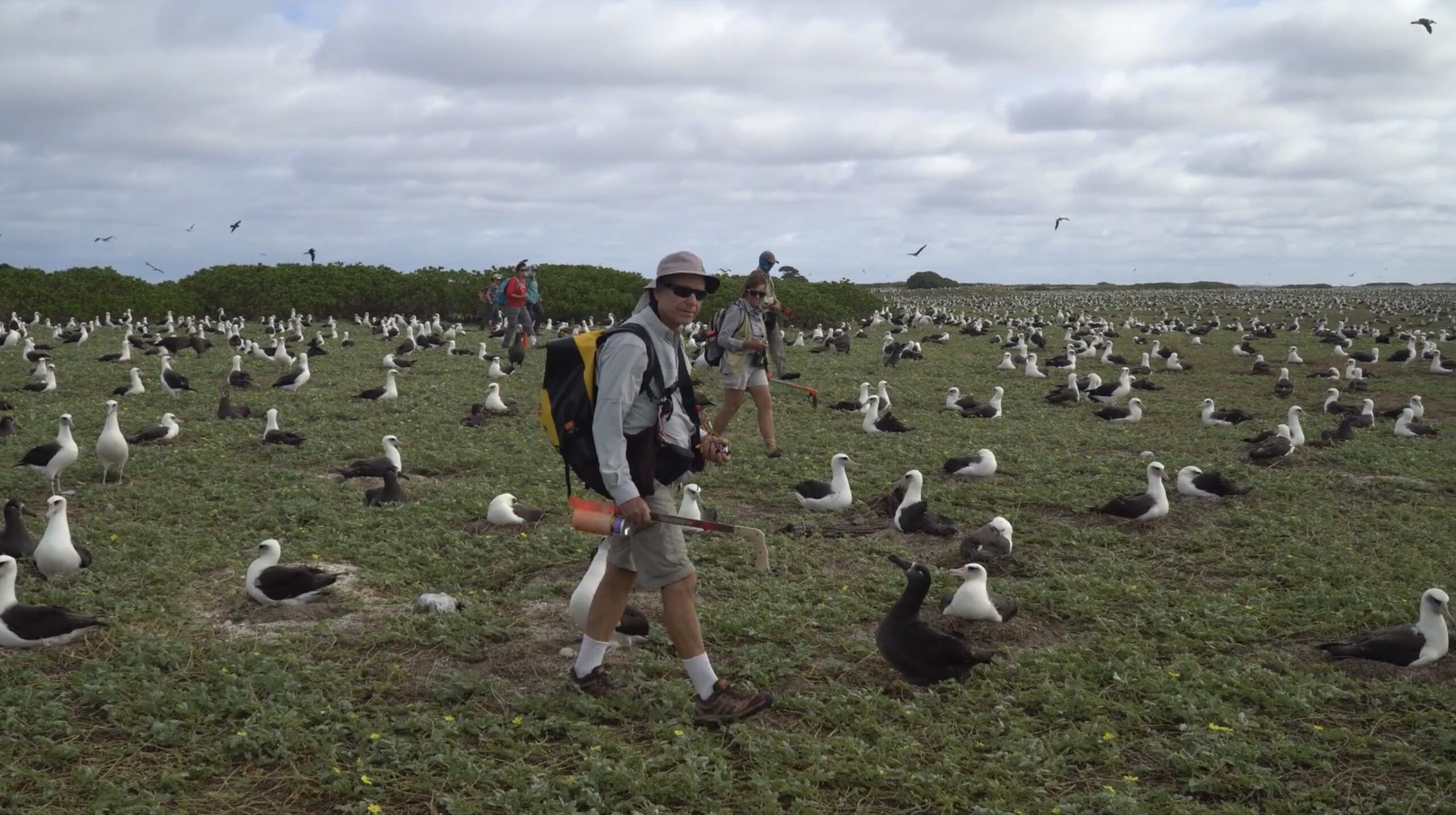by U.S. Fish and Wildlife Service (USFWS) Volunteer Kyle Richardson (K2), all photos and video by USFWS Volunteer Dan Rapp
On Kuaihelani there are a lot of nesting mōlī. Exactly how many, you ask? Well, that’s a big number, and it turns out somebody has figured it out. A lot of somebodies, actually, who are volunteers known as the nesting albatross counting team.
If, like me, you are not a professional biologist, you may wonder what exactly the point is to counting every single mōlī (Laysan albatross) and ka’upu (black-footed albatross) nest on Midway Atoll. If you had a chance to meet the awesome people pictured above, I can assure you, you would find out. As it happens, your Midway connection, K2, has been lucky enough to do just that. I recently sat down with this dedicated crew of volunteers, known lovingly as the “Bird Counters”, and I learned a thing or two.
First off, what is an albatross nest counter? Each year up to 50 people apply to be part of the team, and around mid-December the dozen or so hearty individuals selected arrive at Midway. The volunteers then spend a few frenzied weeks trekking from one side of the atoll to the other. These intrepid citizen scientists spend 8 hours a day, six days a week hand-counting every mōlī and ka’upu nest on Midway Atoll’s two islands. They must be in above-average physical shape, maintain a sharp focus, and be motivated to complete the job. This survey is part of a decades-long data collection effort that could only really be done on Kuaihelani. It requires a fierce commitment to the project and the role it plays in helping assess the health of the atoll’s albatross populations as well as ocean that feeds them.

Nest counters provide vital data to environmental scientists, conservationists, and various government agencies each year. Knowing the status and vitality of sentinel species like the Laysan and black-footed albatross helps protect and preserve habitats worldwide. Since 1991 albatross nest count teams have used the unique features of Midway Atoll to localize and focus their efforts. Government funding and contributions from the Friends of Midway Atoll (FOMA) help keep Kuaihelani a safe nesting site for these albatross, as well as provide work supplies and direct support for the volunteer bird counters.
Having an accessible, livable remote field station has allowed the census volunteer program to continue despite changes in climate and logistics. In recent years, albatross nesting sites on Laysan Island and French Frigate Shoals within the larger Papahānaumokuākea Marine National Monument have become increasingly difficult to access, making the Kuaihelani data all the more valuable.

Adding another layer of intensity to the job is the fact that Kuaihelani is a wildlife refuge. The atoll is managed as a natural environment that supports wildlife and therefore, human impact is kept to a minimum. Nest counters must navigate challenging terrain and avoid disturbing nests and habitats of many native and endangered species. Counting techniques are continuously updated to prevent harm to wildlife or the environment
Perhaps the importance of citizen science was never felt more acutely than in 2015, when census takers were the first to discover nesting mōlī being predated upon by introduced mice. This find launched several rounds of investigation and massive, inter-agency efforts to eradicate the mice. Without the census volunteers covering literally every inch of albatross nesting grounds, the mice’s deadly impact could have gone unnoticed until it became a much more widespread problem.

Experiencing Midway Atoll to count every albatross nest by hand is surely a rewarding, often life-changing experience, but it is a very difficult job.. Fortunately, the mōlī and ka’upu on Kuaihelani are in good hands, literally. And to answer your question from earlier, this year the nesting albatross census team counted 29,562 ka'upu (black-footed albatross), and 498,448 mōlī (Laysan albatross) nests on Sand, Eastern, and Spit Islands. Each one counted by hand, on foot, with two eyeballs and a clicker. Let’s give them a — well, you get it. Great job!
Check out the Nesting Albatross Count Team in Action!

